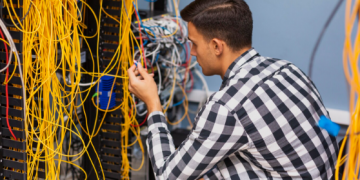Introduction to Hyperbaric Chambers
Hyperbaric chambers are an essential component of commercial diving operations. They are used to treat decompression sickness, commonly known as “the bends,” a condition that occurs when divers ascend too quickly, and nitrogen bubbles form in their body tissues. Hyperbaric chambers are also used to treat other diving-related injuries such as gas embolisms and carbon monoxide poisoning.
The Importance of Hyperbaric Chambers in Commercial Diving
Hyperbaric chambers are critical in commercial diving operations to ensure the safety and health of divers. Without these chambers, divers who suffer from decompression sickness would have to be transported to land-based hospitals for treatment, which can take hours and delay life-saving medical care. Hyperbaric chambers on-site enable divers to receive immediate treatment, significantly increasing their chances of a full recovery.
Types of Hyperbaric Chambers
There are two primary types of hyperbaric chambers used in commercial diving: monoplace and multiplace chambers. Monoplace chambers are designed to treat only one person at a time and are typically used for treating minor injuries. Multiplace chambers, on the other hand, are larger and can treat multiple people simultaneously, making them ideal for treating more severe diving-related injuries.
How Hyperbaric Chambers Work
Hyperbaric chambers work by creating a pressurised environment, which helps to reduce the size of nitrogen bubbles in the body, allowing them to be safely eliminated by the body’s natural processes. During treatment, divers are placed inside the chamber, and the pressure is gradually increased until it reaches the appropriate level for treatment. Once the treatment is complete, the pressure is slowly decreased until it reaches normal atmospheric pressure.
Safety Measures and Regulations
Hyperbaric chambers must comply with stringent safety regulations and guidelines to ensure that they are safe for divers to use. Diving companies must also ensure that all divers are trained on the proper use of hyperbaric chambers and that safety protocols are strictly adhered to. It is also essential to have a qualified medical professional on-site to oversee hyperbaric treatments and monitor the divers’ health during and after treatment.
Maintenance and Upkeep
Proper maintenance and upkeep of hyperbaric chambers are crucial to ensure that they remain safe and effective. Routine maintenance includes checking the pressure gauges, oxygen supply, and electrical systems. Chambers should also be inspected and serviced by a qualified technician regularly. It is also essential to keep the chamber clean and disinfected to prevent the spread of infection.
Advancements in Hyperbaric Chamber Technology
Advancements in hyperbaric chamber technology have improved their safety and effectiveness. Newer chambers are more compact and energy-efficient, making them easier to transport and operate in remote locations. Some chambers also feature advanced monitoring systems that can track the patient’s vital signs, oxygen levels, and other important data during treatment.
Future of Hyperbaric Chambers in Commercial Diving
Hyperbaric chambers will continue to play a vital role in commercial diving operations, as they are essential for treating diving-related injuries. The development of more advanced technology and improved safety features will further enhance the effectiveness of hyperbaric chambers. In the future, we may see the development of even more portable and efficient hyperbaric chambers that can be easily transported to remote locations, further improving diver safety and treatment outcomes.















